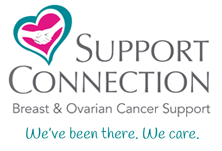“A mother’s love knows no bounds” couldn’t be more evident in the coast-to-coast hunger relief effort championed by Family-to-Family, a nonprofit organization that connects families of modest means to families that are less fortunate throughout the United States.
Since I founded the organization in 2002, Family-to-Family has served more than one million meals to the hungry via its Family Chain that links people who live hundreds or even thousands of miles apart. The Chain reaches across cultural, racial, religious and social differences, connecting donors and recipients living in profound poverty.
Family-to-Family recently implemented a program in conjunction with the Red Cross, the United Way and The Salvation Army organizations in Missouri to help displaced families from the Joplin tornado to get back on their feet. The new program is similar to the one launched by the organization in 2005 following Hurricane Katrina. After the hurricane, homeless families in New Orleans signed up with a shelter or social services organization to be matched with a sponsoring family that in turn offered food, clothing, medical supplies and other necessities.
We were able to link thousands of donors with an equal number of recipients in New Orleans following Hurricane Katrina. Now, we are working to help the people of Joplin and hope to reach and assist just as many people. Our arms and hearts are far reaching, and we are here to help.
I started Family-to-Family after reading a New York Times feature about poverty in the U.S. that highlighted the conditions of poor, rural America. The article reported that in one community— Pembroke, Illinois— 51 percent of the families with children were living below the poverty level. I felt compelled to help these families, so I recruited families in Hastings-on-Hudson to send food and supplies.
This started a monthly program in which each donating family sent boxes of food to their “family.” Letters were shared between families, giving donors and recipients a way to connect on a personal level and get to know each other. The 17 families that initially participated soon grew to 60. Today, Family-to-Family serves 450 families in some of the most forgotten, impoverished rural communities. Our effort is limitless and we are striving for our reach to keep growing throughout the country. We welcome new participants and are always happy to connect with those who want to help others, as well as with anyone in need.
In addition to its hunger relief effort, Family-to-Family has created a host of other programs including:
- Victory Garden Project. Families learn the skills needed to grow and can fruits and vegetables and to farm chickens. They are mentored and supplied with seeds and chickens. After completing a growing season, the families become program mentors to other families.
- Seeds for Change. Donors purchase seeds online or in stores and send them to Family-to-Family to distribute. Families in the receiving communities are then supplied with the fruit and vegetable seeds during a seed drive.
- One Book at a Time. This literacy initiative links a donor family with a family living in poverty. The donor family chooses and sends one book to a child in the recipient family each month for one year.
- Kids Can! Adopt a Local Food Pantry. This giving project for elementary school-aged children is centered around the school environment. Students and teachers are organized so that a different grade brings in food to stock the pantry each month.
- The Breakfast Club. Middle and high school students oversee a schedule so that each month one grade collects, boxes and delivers breakfast foods to a local food pantry. Students also make and distribute flyers and other resources to spread the word to contribute.
- The Closet for Good. Family-to-Family provides communities with “Swap and Shop” recycled thrift shops. Recipient families along with a community outreach partner gather, sort and create a non-monetary thrift shop that shares and recycles clothing, toys, books and other goods.
- The Traveling Journal. By writing and drawing in a shared journal that travels back and forth between schools, less fortunate children and more fortunate children communicate with and learn about each other.
- Birthdays in a Box and Birthday Giving Parties. Fortunate kids send birthday gifts and party goods in individually decorated shoeboxes to needy children whose parents cannot afford birthday celebrations.
- Best Dressed Babes. Gently used party clothes are donated in this program to supply the kids in receiving communities with dressy clothes for special occasions.
- Books for Life. This book drive sends new and gently used books to communities where books and libraries are scarce.
- Thanksgiving Turkey Drive. The annual drive encourages people to purchase discounted turkeys for receiving families. This way recipients may celebrate Thanksgiving the way most Americans do.
- Holiday Toy Drive. Each year, the drive sends unwrapped, donated toys and wrapping paper to receiving communities, enabling parents to shop for their children and wrap the gifts themselves.


